Sourdough vs white sliced: Which breads should we be eating?

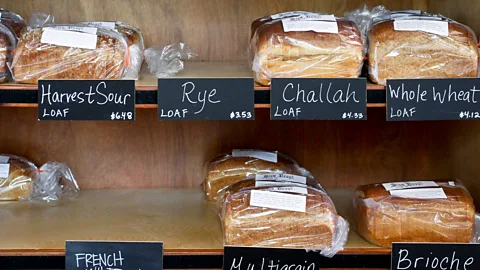 Getty Images
Getty ImagesWhen it comes to bread, supermarkets have a dizzying array of choice. Yet the bread we eat can have a surprising impact on our health.
Like many of us, I started making sourdough during the Covid-19 lockdown in 2020. My colleagues at the BBC published a step-by-step guide, and I – alongside thousands of others – gave it a go. I must confess I didn't start completely from scratch as a friend gifted me some of her starter – the live mixture of wild yeast and bacteria which help bread to rise. After many failed attempts it became not only edible, but delicious. I don't have a very precise method, but it usually turns out OK.
At first, I carried on making bread because it was tasty, but after learning more about the health concerns around ultra-processed foods (UPFs) – which often contain added salt, sugar, fat, and industrial chemical additives – I felt determined to keep going. Not only did my bread taste better than supermarket offerings, but it was free of those ultra-processed food (UPF) ingredients that scientists warn aren't particularly good for us. Five years on, my starter is still thriving and used regularly.
However, not all of us have time to bake our own bread every day. Artisan sourdough can also be extremely expensive. In comparison, supermarket bread is cheap and convenient. But given that there are so many options in the supermarket, it can be difficult to know what's best to eat. So which bread is the healthiest, and what should we look out for when buying a loaf?
The Chorleywood method
In the late 1950s, scientists at the Chorleywood factory in the UK developed a method to produce dough much faster than before. They added hard fats, additional yeast and chemicals such as enzymes, oxidants (to strengthen the dough) and emulsifiers (which helps other chemicals combine), then mixed their recipe together at high speed.
This innovative new technique made bread quicker and cheaper to produce using low-protein British wheat. The extra additives such as emulsifiers gave the bread longer-shelf life too, which is why today about 80% of the loaves we eat are still made using the Chorleywood method.
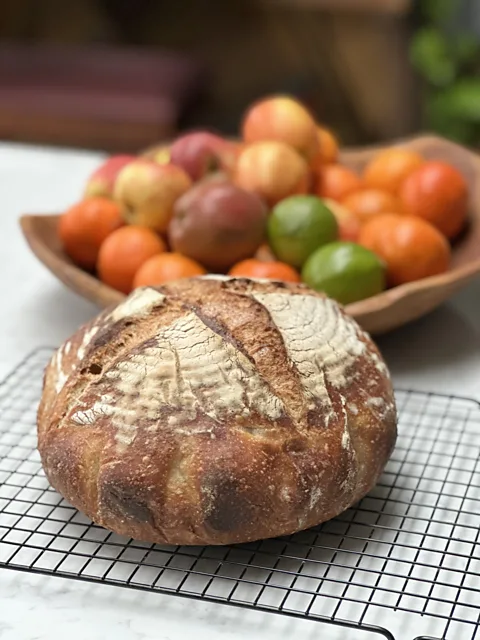 Melissa Hogenboom
Melissa HogenboomAlthough the Chorleywood process was initially developed as a way to help small bakers compete with bigger industrial bakeries, it backfired. Despite the intentions of the scientists behind it, large industrial bakers adopted the process too, putting smaller bakeries out of business.
Sourdough
If the Chorleywood method produces quick, spongey loaves, sourdough bread is on the slower end of the bread-baking scale.
To make almost any risen bread (one that uses yeast or bacteria to create bubbles of gas), there are several essential steps involved. First the ingredients are mixed, then kneaded – this helps the gluten to form an elastic dough – followed by the first rise, which is where the dough is left, usually in a warm, humid environment, for the yeast to break down sugars and create pockets of carbon dioxide. After this, the bread will either be baked immediately or worked again to shape it into its final form, such as a baton or a baguette, and allowed to rise again. During this second step of fermentation, the yeast will form smaller bubbles of air, which improves the structure of the final loaf. Then the bread is ready for baking.
When I make bread, the final rise (called proofing) happens in the fridge overnight, which slows down the fermentation process, enhancing the flavour. This also means that the entire process, from activating my starter – where it is mixed with flour and water, and allowed to wake up before it's used – to taking the bread out of the oven, can take as long as 36 hours.
In its most basic form, the ingredients of sourdough are flour, salt, and water mixed with a sourdough starter – usually a mixture of bacteria and yeast – which acts as a natural raising agent. Those of us who eat it tend to love the taste, but what's even better are the health benefits.
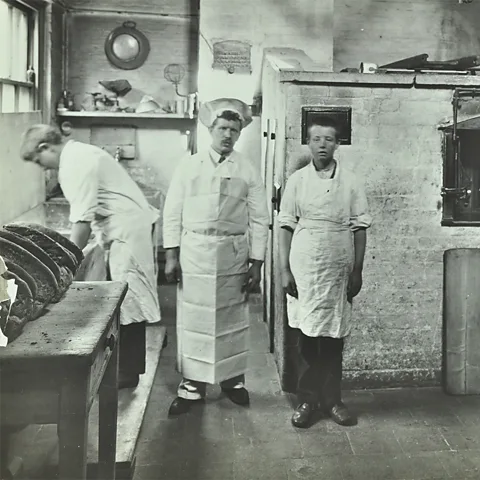 Getty Images
Getty ImagesSourdough can be easier to digest than other breads as the slow fermentation process breaks down the protein and makes the vitamins and minerals easier for our body to absorb. As sourdough ferments, its natural lactic acid bacteria break down carbohydrates in the flour. This process significantly reduces the amount of hard-to-digest sugars known as fermentable oligosaccharides, disaccharides, monosaccharides and polyols (fodmaps).
At the same time, the fibre and healthy compounds called polyphenols provide important fuel for our gut microbes. Similarly, the slow fermentation process makes it helpful for those who need to manage their blood sugar level. However, commercially available, (usually) yeast-based breads do have some benefits, including being fortified with certain vitamins and minerals.
Sourdough has also been found to keep you fuller for longer. Some studies have found that people feel less hungry after eating sourdough baked goods compared to other breads. Others though, didn't find any difference.
Ultra-processed bread?
Today, many breads found on supermarket shelves baked using the Chorleywood method are defined as UPFs, due to the chemicals and emulsifiers added to them. For example, in some countries, such as the US, processed bread may contain the additive potassium bromate, which helps bread to retain carbon dioxide and leads to larger loaves. However, it is considered a possible carcinogen in humans.
In the UK about 54% of the calories we consume are in the form of ultra-processed foods, according to a 2020 study. The figure is similar in the US, though estimates vary. It can be hard to identify what a UPF ingredient is, so a rule-of-thumb many academics advise is this: if the food contains five or more ingredients, as well as ingredients you wouldn't have in your own kitchen, it's likely to be UPF.
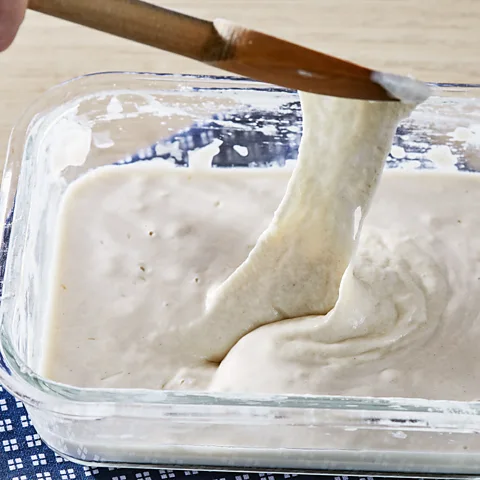 Getty Images
Getty ImagesMost bread found in supermarkets today is mass-produced and contains additives that boosts production speed, extends shelf life, enhances flavour and texture, as well as replaces nutrients lost during the production. This means most supermarket loaves are classified as ultra-processed.
Mass produced bread accounts for about 11% of a typical diet and a diet high in UPFs is linked to a range of health conditions, though it's worth noting that the way food is categorised as UPF lumps many different food groups together, and researchers urge caution not to vilify all supermarket bread.
One option is to choose bread with as few extra ingredients that you do not recognise as possible. And if you are going for packaged bread, you might want to consider opting for wholegrain instead of white. Nutritionist Jenna Hope told BBC Good food that "different types of breads are associated with different health benefits. For example, wholegrain bread with seeds will be higher in fibre and have healthier fats than white bread."
Wholegrain bread
Wheat grains are made up of several layers. There's the germ – the embryo of the wheat which is rich in protein – the outer shell, known as the bran, and the starchy endosperm, which acts as a food store for the embryo.
In regular bread, the germ and the bran tend to be removed, leaving just the endosperm. In contrast, wholegrain bread uses all parts of the grain – and this is what gives it its range of health benefits, as they contain polyphenols (a group of chemicals with antioxidant properties), essential nutrients like vitamin E, folate and magnesium, as well as fibre, protein and healthy fats. White flour on the other hand, has the germ and bran removed.
Unlike refined grains, wholegrain bread is packed with more fibre, vitamins, and minerals. These benefits mean that swapping from white bread to wholegrain could reduce the risk of heart disease and improve your gut microbiome. Eating more wholegrains is also linked to a reduced cancer risk.
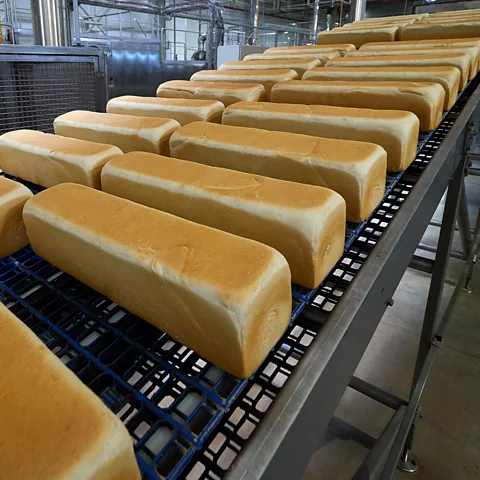 Getty Images
Getty ImagesThe fibre found in wholegrain bread can also keep you feeling full for longer as we digest it more slowly, so it can lead to a more gradual increase in blood sugar levels, rather than the spike we often get from white bread, which can make us hungrier sooner. One study found that those who ate three portions of wholegrain per day had a lower BMI and reduced belly fat compared to those who ate refined grains, showing that eating wholegrain food could help individuals maintain a healthier weight.
It's worth noting that some supermarket bread marketed as "seeded" is not necessarily made from wholegrain flour, even though it appears brown in colour. Of course, if you find it difficult to give up white bread, you can get wholegrain food in your diet from a range of other foods too, including brown pasta, brown rice, rolled oats, and even popcorn.
A healthier white bread
Today white bread is still the most popular form of bread bought by consumers in the UK, despite the fact that it lacks the nutritional value of wholegrain. That could soon change, however. Researchers have created a new wholemeal bread that tastes and looks like white bread.
To do so, the researchers plan to enrich bread with small amounts of peas, beans, and various cereals, alongside the bran and wheat germ that is typically removed in white bread flour. While the research is in its early stages, Catherine Howarth of Aberystwyth University, one of the researchers involved in making these loaves, stated in 2024 that the process is a "delicate balancing act", as the team tries to match the nutritional value of wholemeal bread but create the taste and consistency of white bread.
More like this:
• Barm vs cob: why Britain has so many names for a bread roll
The team is also incorporating other nutrient-rich grains like teff, sorghum, and millet, as well as seeds such as quinoa. Green peas and chickpeas are also being considered to provide an extra protein boost. "Using other cereals we can enhance the iron, zinc and vitamin levels and most importantly the fibre content, because white bread has very little fibre, which is so important for good health," Howarth told BBC News.
While my colleague, BBC Science correspondent Pallab Ghosh, tried an early prototype – and found it extremely tasty – it may take another two years before this product is available to buy.
So what should you choose?
A lot of choice ultimately comes down to personal preference, convenience and cost.
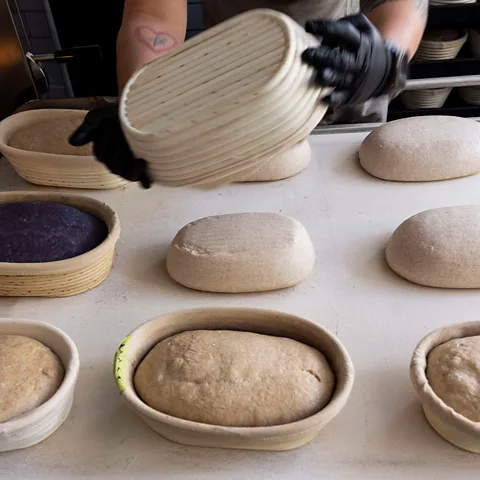 Getty Images
Getty ImagesAn expensive sourdough loaf may be out of reach for many, and minimally processed bread is not practical or affordable, yet it's still worth checking the ingredients of the produce you buy. Knowing what to look out for will help you make more conscious choices when it comes to choosing bread.
One loaf that looked fairly healthy to me in my local supermarket had added granulated sugar and preservatives, for instance.
Some supermarkets do sell sliced packaged sourdough – and the ingredient list is minimal, distinguishing it from UPF versions of sliced bread. And for those worried about shelf life, freezing bread is always an option too.
For those interested in baking their own bread, the BBC has plenty of recipes to follow, including how to make your own sourdough loaf.
* Melissa Hogenboom is a BBC health and science journalist and author of the upcoming book Breadwinners (2025) and The Motherhood Complex
--
For trusted insights into better health and wellbeing rooted in science, sign up to the Health Fix newsletter, while The Essential List delivers a handpicked selection of features and insights.
